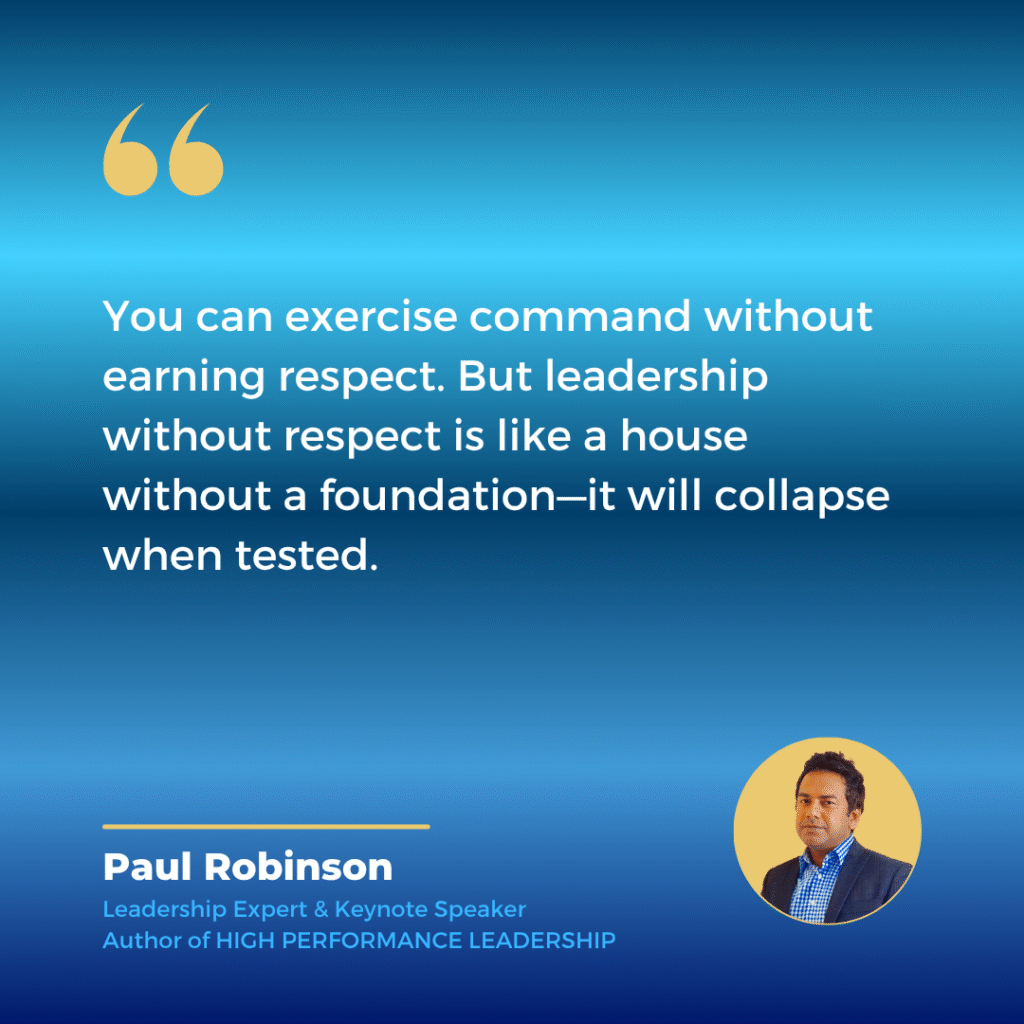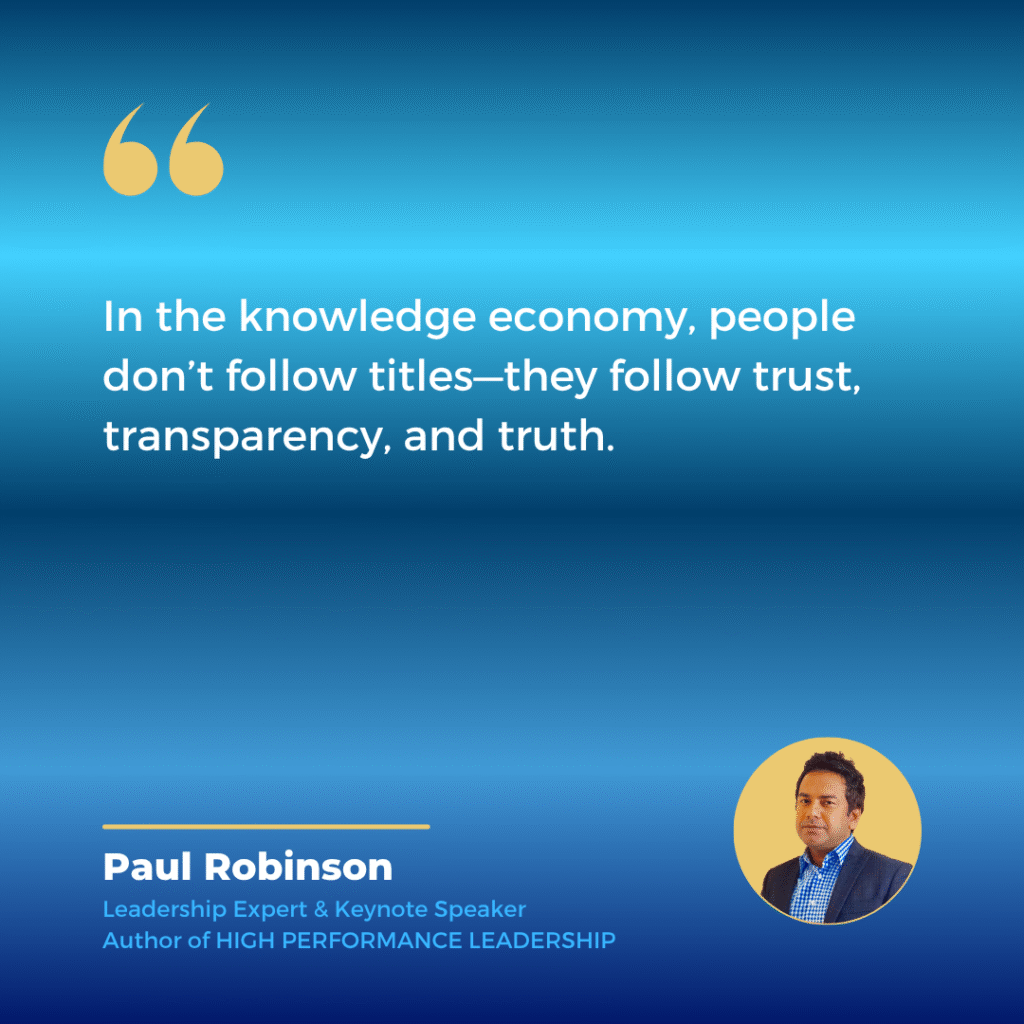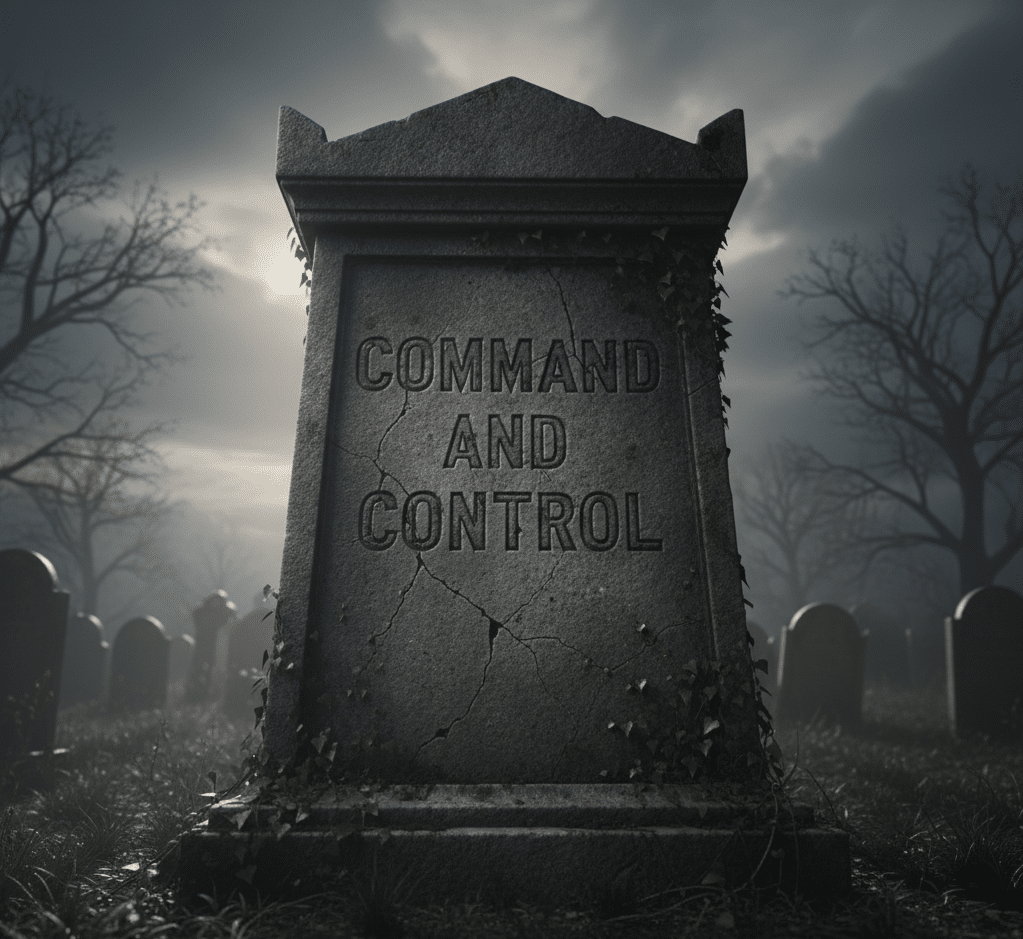Why Did the Command and Control Leadership Model Thrive in the Industrial Age?
To understand where we’re going, we must first understand where we’ve come from. The “command and control” model of leadership emerged during the industrial revolution—a time when efficiency, obedience, and standardization were paramount.
Factories needed discipline, not dialogue. Managers issued orders; workers followed them. Education systems mirrored this industrial model, training people not to question, but to comply. It worked in an era when jobs were lifelong, options were limited, and pensions were guaranteed.
In my keynotes to legacy manufacturers and traditional institutions, I often remind leaders: this model wasn’t wrong for its time—it’s just obsolete now.
Authoritarianism in this model wasn’t just accepted—it was reinforced through hierarchy, routine, and fear. But here’s the problem: it optimized for efficiency, not for creativity or engagement.
What Were the Hidden Flaws in the Command and Control Approach?
On the surface, command and control leadership seemed effective: processes were predictable, orders were followed, and roles were fixed. But beneath that rigid structure lay serious demerits.
- Accountability was replaced by blame.
- Creativity was stifled.
- YES-men thrived while innovators left.
- Leadership titles substituted for actual influence.
It was a system built not on trust, but on fear. People didn’t follow their leaders because they believed in them—they followed because they had no choice.

Why Has Command and Control Become Dangerous in Today’s Workplace?
We no longer live in a world powered by machines—we live in a world powered by minds. Knowledge workers, creatives, strategists, coders, analysts—these professionals do not respond to orders. They respond to purpose.
Today’s employees are:
- Multi-skilled
- Mobile
- Purpose-driven
- Deeply conscious of culture and values
Micromanagement is not just outdated; it’s toxic. It fuels attrition, resentment, disengagement, and low trust. According to a Gallup study, nearly 70% of employee engagement is influenced by their manager’s leadership style.
And yet, many workplaces still operate as if it’s 1925. Why? Habit. Inertia. Misplaced nostalgia.
How Has the Rise of Knowledge Workers Changed Leadership?
Knowledge workers are not replaceable units on a production line. They bring their whole self to work—ideas, emotions, biases, dreams. They want to be:
- Heard, not herded
- Inspired, not instructed
- Empowered, not micromanaged
The shift is seismic. It requires moving from positional authority to relational influence. From “do as I say” to “let’s build together.”

What Happens When You Cling to the Old Model?
Retention suffers. Innovation dies. Culture rots.
We see it daily—companies with high turnover, toxic cultures, and disengaged talent pools. The problem isn’t the talent. The problem is the model.
Leaders who:
- Shut down dissent
- Micromanage execution
- Dismiss emotional intelligence
- Over-rely on hierarchy
…are leading their teams into dysfunction. Great ideas are lost. Collaboration withers. And the best people walk out the door.
What Are Theory X and Theory Y—and Why Are They Still Relevant?
In 1960, Douglas McGregor introduced two contrasting leadership styles in his book The Human Side of Enterprise:
- Theory X assumes employees are lazy, avoid responsibility, and must be tightly controlled.
- Theory Y assumes employees are self-motivated, seek growth, and thrive in supportive environments.
Theory X managers dictate. Theory Y managers listen.
And as I remind corporate audiences during my leadership seminars, today’s world needs more Y-thinking and less X-enforcing. The theory Y manager’s role is not to bark orders, but to create an ecosystem where people can do their best work.
Why Are Warmth and Competence the New Leadership Currency?
In a 2014 Harvard Business School study, researchers found that people assess leaders on two key traits: warmth and competence. And warmth comes first.
Warmth builds trust. Competence builds respect.
Together, they inspire followership.
This is the future of leadership. Not intimidation. Not position. But authentic connection backed by capability.
When I coach leaders on executive presence, I don’t begin with charisma—I begin with character. Because it’s not enough to be impressive. You must first be trusted.
What Does Leadership Look Like in the Age of AI and Remote Work?
We’re not just in the knowledge economy—we’re in the hybrid intelligence era, where human creativity coexists with machine intelligence. Leadership is no longer about managing time—it’s about managing energy, focus, and intent.
Today’s leaders must navigate:
- Remote teams
- Cross-cultural dynamics
- AI augmentation
- Psychological safety
- Work-life integration
Organizations are no longer factories. They’re living ecosystems—offering coaching, learning, childcare, wellness, social spaces, and community. People spend more waking hours at work than at home. Culture isn’t a “nice to have.” It’s everything.
What Should Replace Command and Control?
The new paradigm of leadership is empower and engage. It is built on:
- Clarity of vision
- Trust over fear
- Autonomy with accountability
- Servant leadership over status leadership
- Listening before speaking
- Emotional intelligence over ego
Leaders are not commanders—they are architects of culture and facilitators of value creation.
Lead People, Not Processes
Command and control isn’t just dead—it’s irrelevant.
The most successful leaders today aren’t the loudest in the room. They are the ones who:
- Ask great questions
- Coach others to success
- Align people to purpose
- Model integrity and resilience

If you still lead through fear, hierarchy, or status—know this: people will follow you because they have to.
But if you lead through warmth and competence—people will follow you because they want to.
And that, my friend, is the only kind of leadership worth practicing.
Recommended Reading
- The Human Side of Enterprise by Douglas McGregor
- High-Performance Leadership by Paul Robinson
- Leaders Eat Last by Simon Sinek
- Drive by Daniel Pink



